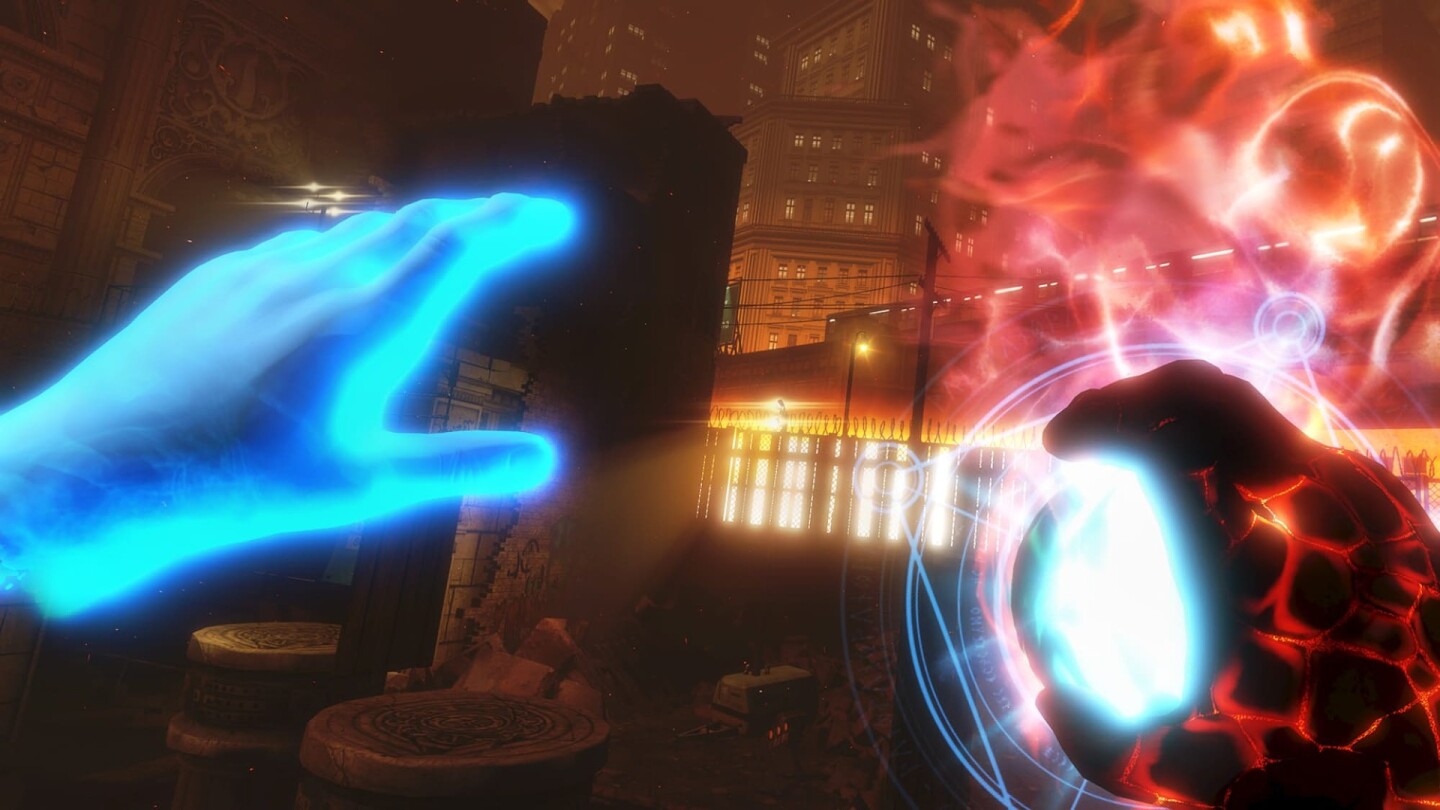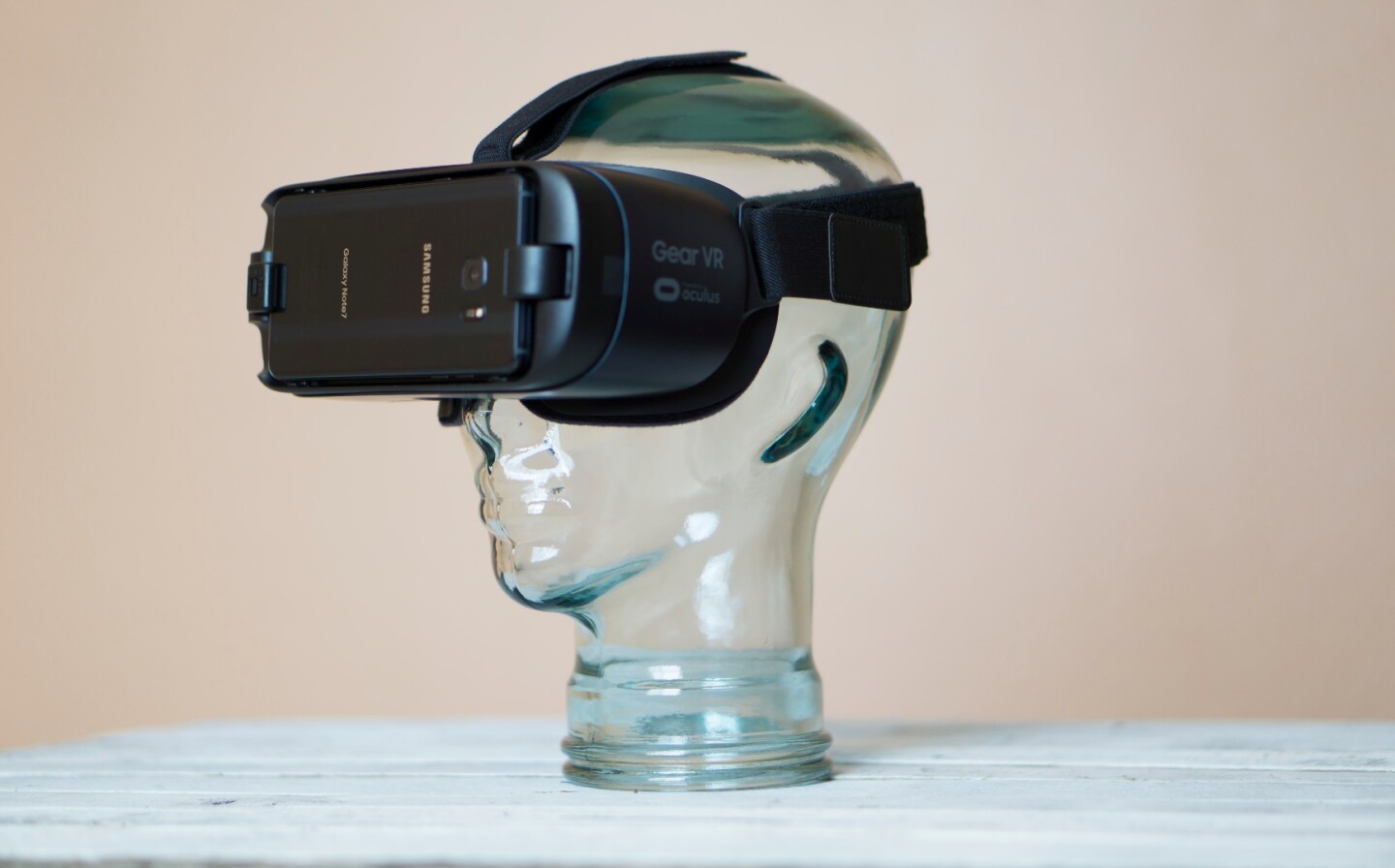If you've ever tried virtual reality, chances are you get what the fuss is all about: There's something "magical" about strapping on a pair of goggles and feeling like you're someplace else. Like any new technology, though, VR has plenty of room for improvement – like these three things we hope to see change in the next few years.
Enough teleporting already

Just 16 short months ago, we thought teleporting was a remarkably clever workaround for VR nausea: Virtually moving while physically sitting still is a near-universal recipe for motion sickness, but teleporting from one spot to another lets you move without the queasiness.
We also, however, forecast at the time that "you can expect to see a flood of teleporting-based [VR] titles a year or two from now." We had no idea how right we were.
Practically any first-person VR game worth mentioning uses teleporting to move you around the larger world. Even in room-scale VR games, where you can physically walk around your space, blinking from one spot to another is still required to make the game world larger than the size of your office or living room.
Teleporting is even the go-to method of locomotion in games where there's no magic to speak of. Teleporting in a Zelda-like fantasy such as Vanishing Realms we can swallow; but why can a non-magical human in a game like Arizona Sunshine also zap around?
VR teleporting has been mercilessly beaten into the ground. It's everywhere.

So what can devs do instead of teleportation? That isn't yet clear. Some use cockpits as stabilizers (like in space-combat game Eve: Valkyrie), while other devs stick with standard VR movement, motion sickness and all.
We did recently try a wearable that made the most nausea-inducing games surprisingly playable. If something like the Reliefband were to a) work for just about everyone and b) gain mainstream acceptance, then virtually walking while physically standing would be the obvious solution. But we don't expect a band that sends electrical pulses into your wrist to become a universal prerequisite; to many people it will just seem weird.
It's clear everyone wants to move past teleporting (and cockpits), but nobody seems to have figured out how. In the meantime, this effective-but-overused workaround is making VR locomotion repetitive and illogical.
Cut the cord

While mobile VR like Daydream and the Gear VR is wireless, more-powerful systems like the Oculus Rift and HTC Vive aren't. Right now you have to choose between high-end and cutting the cord.
The solution to this problem looks more promising than the teleporting conundrum, though, as the last few months have showcased some potential breakthroughs in wireless VR. Not only did Oculus tease a fully-wireless version of the Rift in October, but several companies have since revealed accessories that will untether the Rift or Vive early in 2017. (They still have a wire running from headset to a device in your belt or pocket, but that's a marked improvement over a long wire connecting player and PC.)
For VR to truly go mainstream, we'll likely need to see headsets that are 100-percent wireless and self-contained. No PC or console needed, no wires and a highish-end experience. That could end up meaning more-advanced smartphone VR or it could mean a standalone (no smartphone inside) product along the lines of the one Oculus teased.
It's tempting to say we're still far away from that, but given how quickly and unexpectedly wireless adapters for PC-based VR popped up, we could be surprised again.
Make the good stuff more affordable

In the near term, it's probably too tall an order to say we want high-end VR to get wireless and more affordable at the same time. But longer-term, if VR is to move past niche/enthusiast status, the good stuff needs to get much cheaper. (Or the cheap stuff needs to get much better. Take your pick.)
Right now a high-end setup – which means the Rift or Vive along with a VR-ready PC – will cost you roughly US$1,500. While Apple may get away with charging that much for a premium laptop (a product with a practical purpose, often related to doing work and therefore making money), it's much harder for most people to justify spending that much on pure entertainment.
A flagship smartphone costs around $600-800, but that's usually paid in installments rather than upfront. (And like the laptop, it's also about more than entertainment.) High-end tablets like the iPad (more of a nonessential luxury than a smartphone) start at $400-600, but even at those price points they've dwindled in popularity. Game consoles, meanwhile, currently fall in the $250-300 range.
For VR to become a truly mainstream product category, I think we need to see the entire system – standalone headset, with quality tracking and controllers – fall roughly in line with the Xbox One, PS4 or Nintendo Switch in that $300-ish tier.

Mobile VR is already in an affordable price range: Most people already own a smartphone, and more models are becoming compatible with quality headsets like the Gear VR and Daydream that ring up for under $100. The problem is mobile VR lacks positional tracking or true motion controls, and it doesn't allow for physical movement. And if you add quality tracking and controls onto mobile VR headsets, their prices may skyrocket way past their current price points.
We aren't blind to economics: The perfect balance of quality and cost isn't missing because nobody has recognized the need. It's that the truly badass gear like the Oculus Rift and Vive is expensive to make.
This one, perhaps more than the other items on this list, is just going to take time. Fortunately history is on our side: New consumer technologies almost always start expensive, but get more affordable through the years. (Think flatscreen TVs in the early 2000s or desktop computers in the 1980s.) Even if it takes five years or a decade, that ideal VR sweet spot between experience and affordability will arrive at some point.
For an expert's take on the more technical challenges that lie ahead for VR, you can check out our recap of Oculus' Chief Scientist's talk at the company's latest developer conference.









